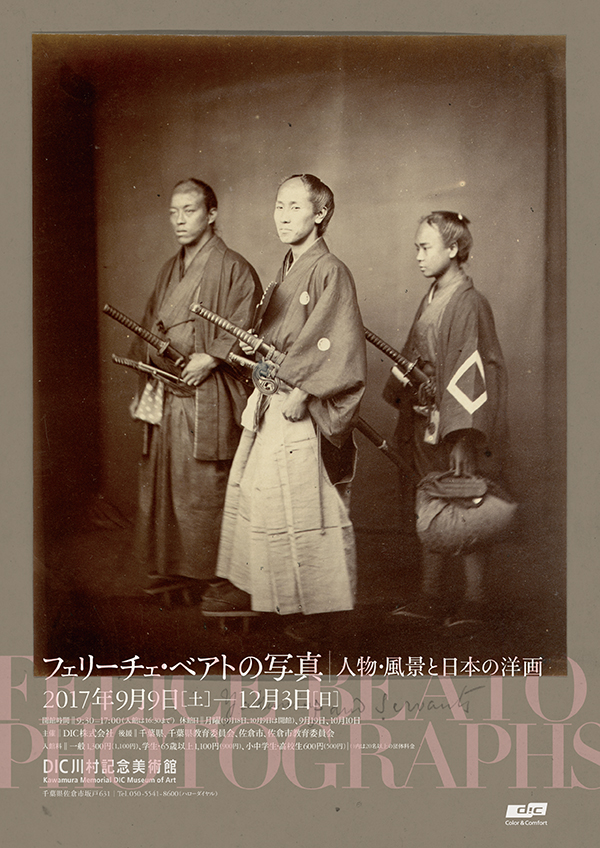Felice Beato Photographs
September 9 - December 3, 2017
- Hours:
- 9:30-17:00 (last admission 16:30)
- Closed:
- Mondays (except Sep. 18, Oct. 9), Sep. 19, Oct. 10
- Organizer:
- DIC Corporation
- Patrons:
- Chiba Prefecture, Chiba Prefectural Board of Education, Sakura City, Sakura City Board of Education
Museum Admission
- Adults ¥1,300
- College / 65 and over ¥1,100
- Elem / JH / HS ¥600
Groups of 20 or more:
- Adults ¥1,100
- College / 65 and over ¥900
- Elem / JH / HS ¥500
Persons with a disability pass:
- Adults ¥1,000
- College / 65 and over ¥800
- Elem / JH / HS ¥400
*Admission also includes entrance to the permanent collection galleries.
- For students and seniors over 65, discounts require identification such as a Student ID, passport or driver's license.
- For persons with a disability pass=the same discounted price applies for one accompanying care-giver for each disability pass holder
Outline
Felice Beato (1834 – 1909) was active as a traveling photographer in the mid-19th century, capturing exotic scenes of distant lands from the Middle East to India and on to China; and he also became noted as a wartime photographer, recording scenes of the Indian Rebellion of 1857, the Second Opium War and other events. In 1863, Beato traveled to Japan with the aid of the painter Charles Wirgman, and working from his base in Yokohama took photographs of landscapes and the lives of the people from the end of the Tokugawa Bakufu era into the early Meiji Period. Beato would leave Japan in 1884, but his Japan photographs remained popular export items and were highly acclaimed as the beginning of the genre known as “Yokohama Photographs.” Today these photographs continue to hold strong appeal in our eyes as views of the way life actually was 150 years ago.
Photography has played an important role in modern Japanese visual arts and modes of expression. The techniques of oil painting and photography had been introduced to Japan from the West, and Japanese Western-style oil painting (Yoga) artists were known to use photographs for reference when visualizing landscapes, learning about composition and then executing oil paintings of high aesthetic and artistic quality.
In this exhibition, we display about 180 period photographs from three albums in the Kawamura Memorial DIC Museum of Art’s collection along with a selection of 18 early Yoga oil paintings created in Japan that shared the same focus on people (genre subjects) and landscapes. It is our hope that this exhibition will provide an opportunity to consider anew the interrelationship between Eastern and Western culture, while comparing how Western eyes saw Japan and, in response, how Japanese artists forged new visions of art in Japan.
